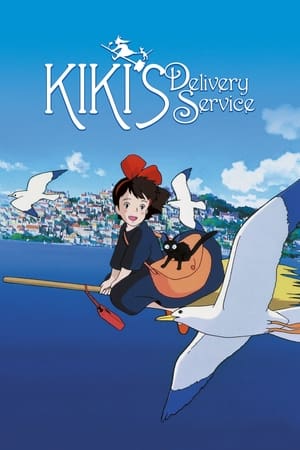
Kiki's Delivery Service
When watching films by Japanese animation powerhouse Studio Ghibli a number of adjectives come immediately to mind; imaginative, wholesome, and quirky, to name a few. And there is perhaps no more quirky Ghibli film than _Kiki's Delivery Service_. Fundamentally, _Kiki's Delivery Service_ is a coming of age film, telling the story of 13-year-old trainee witch Kiki who leaves home with her cat Jiji to continue her training. Arriving in a far-off European city, Kiki starts a flying delivery business, couriering goods around the town, which catches the eye of aviation-obsessed Tombo, who is immediately smitten by her flying. One of the big draws of Ghibli is the simplicity of the stories, making them hugely accessible for the audience. In Kiki's Delivery Service we must just accept that there are "some" witches and even though people will possibly never see one, they are not feared. In fact, the only fear in Kiki's Delivery Service comes from Kiki's own self-doubt. Considering, then, that Japan is far more conservative than the West - especially when it comes to family values - it is quite bizarre that one conservative Christian group in America took the decision to boycott the film solely for the purpose of glamorising witches. But really, Kiki being a witch is completely secondary to the film. In some ways it could be argued that Kiki being a witch is simply another excuse for director Hayao Miyazaki to view another Ghibli world from the sky, allowing his team of animators to draw some of the most beautiful landscapes in animation. In addition, it allows Kiki's comic foil to be a talking cat (who, in the English dub, is voiced by the instantly vocally recognisable Phil Hartman, who you may remember from such shows as _The Simpsons_, where he plays Troy McClure). As well as dominating most of the film's funnier moments, Jiji also depicts Kiki's transition from innocence. Despite all of this marshmallowy innocence, _Kiki's Delivery Service_ is still a quirk. The plot is littered with unanswered questions - what happened to the other flying witch who was returning home? - and the final act involving the dirigible is, frankly, too overdramatic and out-of-place with the rest of the down-to-earth storyline. Still, it is perfectly enjoyable, and while it isn't necessarily the first Ghibli I would recommend, it is still one that you should see.
